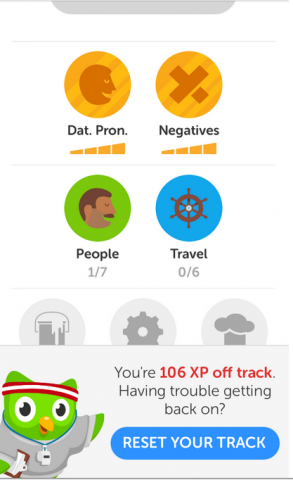Image from Pixabay user jairojehuel.
When I studied Spanish in high school (after a brief and fruitless foray into French in junior high), I was in my element.
I gleefully picked my ‘Spanish name’ to be used in classes from a list in the textbook. ‘Ana,’ my name’s actual Spanish counterpart, was simply too expected — I moved between ‘Margarita’ and ‘Dora’. I received children’s books in Spanish as gifts and watched Dora the Explorer episodes religiously.
During my freshman year in college, I took a semester of Spanish, but I was so paranoid that I wouldn’t have time in my four years to finish the required classes for my chosen major and minors that I stopped pursuing Spanish academically.
Nevertheless, post-graduation, when I revitalized my skills (using the methods and resources below) and became confident enough to list “proficient in Spanish” on my resume, my job prospects increased exponentially.
So, Wanderful readers, don’t be thrown by articles that support the highly controversial “critical period hypothesis,” in which language learning is believed to be exponentially harder the older you are. Many studies, in fact, highlight the unique advantages of older language learners — e.g., their existing bank of vocabulary and ability to interpret contextual clues.
And, since all the tips/tools below are free, you won’t feel badly if you’d like to sample many languages before committing.

Find what’s free.
My absolute top recommendation for language-learning apps/software is Duolingo. Completely free including any updates (Duolingo makes them frequently.) and available on Apple and Android devices, as well as traditional desktop/laptop computers, this app introduces you to common words and phrases as well as more complex verbs and grammatical rules.
The interface is friendly, and you can even ‘buy’ (with ‘lingots’ earned completing lessons) slang lessons. The Spanish version has ‘flirting’ and ‘idioms’ available.
And if you’re craving a more interactive experience, DuoLingo’s online platform has both a discussion board, where users can support one another through the language-learning process, as well as an ‘immersion’ translation board, where users can edit and translate (in a Wikipedia-style group effort) large pieces of text into English.
I also advise ESL language learners hoping to learn English to check out Duolingo. The app currently supports ESL language learners whose primary languages are Polish, Spanish, Hindi, Korean, and many more!

Visit your local library.
If Duolingo isn’t your speed or you’re looking for another resource to supplement it but don’t want to pay the often exorbitant prices of language-learning software, investigate what materials your library has available for rental and/or through online subscription.
Most libraries subscribe to Mango Languages online, which helps you learn real-world phrases as well as understand the culture of the places where the language you are studying is spoken. Many libraries have software like Rosetta Stone as well as textbooks, audio-books, and videos for language learners.
Do some good.
After graduation, during one of my lengthy periods of unemployment, I began to volunteer at Waukegan Public Library, as a tutor for their English conversation classes . . . which were designed to be a safe haven for non-native speakers to practice speaking in English and learning common words and phrases. Because Waukegan serves a predominantly Latino demographic, the conversation classes were largely attended by Spanish-speakers who would communicate with one another in their primary language.
Beginning with some well-intentioned eavesdropping, I soon felt comfortable enough in my Spanish language skills to contribute to the students’ conversations . . . and within a few months, because of the glowing recommendation of the Waukegan Public Library’s volunteer coordinator, I was employed at the county health department and communicating with Latino clients in their native language regularly.














































